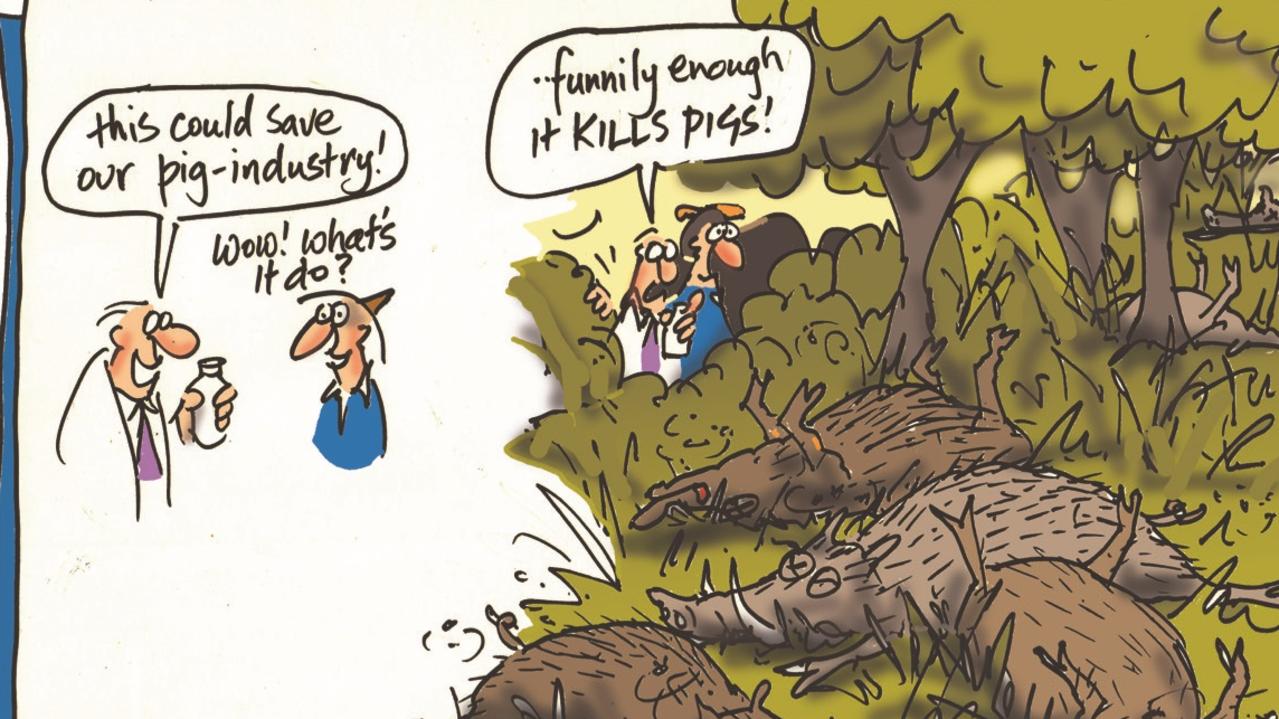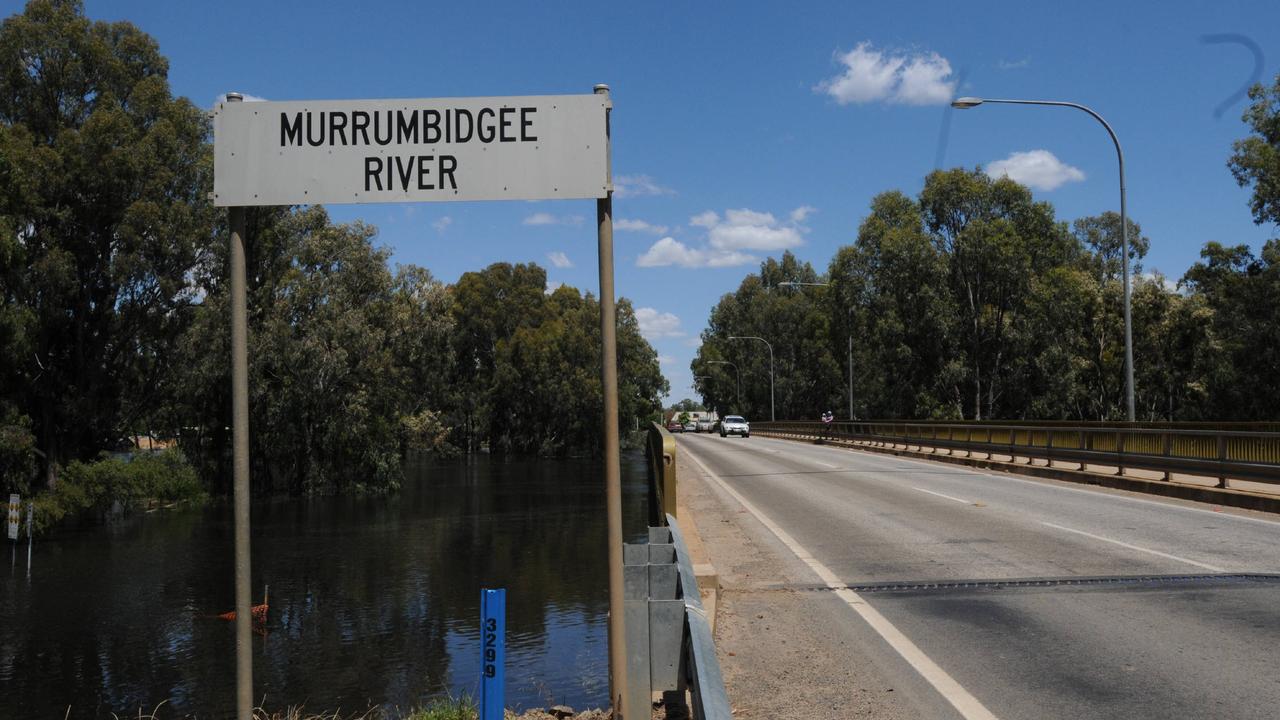SA’s Lower Lakes now hold 1.8m megalitres, equal to 54% of MDBA’s reserves
Australia’s most precious resource is being poured down the Murray River, draining its upper storages to fill South Australia’s highly evaporative Lower Lakes.

THE Murray River is fast approaching a tipping point, as Hume and Dartmouth dams’ reserves are flushed down to the Lower Lakes.
Live river data shows a whopping 1857 gigalitres — equal to 54 per cent of the stored water under the Murray Darling Basin Authority’s control — is now sitting in South Australia’s highly evaporative Lower Lakes. These lakes evaporate 900 gigalitres annually.
As the Basin heads into worsening drought, MDBA data shows it has poured 2376GL across the South Australian border since January, leaving just 3384GL sitting in Dartmouth, Hume and Lake Victoria storages.
Irrigators fear a repeat of the Lower Darling crisis, when the MDBA drained the Menindee Lakes of its 2016-17 flood inflows, leaving nothing in reserve to prevent the demise of the Lower Darling and massive fish kills.
“We’ve already seen the flush of water (from Menindee) to Lake Alexandrina was the catalyst for a massive fish kill,” Southern Riverina Irrigators vice-chairman Darcy Hare said. “People should realise we could see a repeat of the same thing on the Murray.”
Over the past four months NSW Murray irrigators have watched in despair as the MDBA and Commonwealth Environmental Water Holder pushed water down the Murray River, to flood wetlands and fill Lake Victoriato meet South Australia’s future needs.
NSW and Victorian irrigators say South Australia is being overcompensated, and are calling for a redistribution of water.
South Australian irrigators are already enjoying their 10th consecutiveseason on allocations of 100 per cent, with MDBA data showing cross-border flows averaged 3695GL annuallyover the past decade.
Even last season South Australian border flows reached 2441GL, well above the state’s annual 1850GL entitlement.
Meanwhile Victorian Murray irrigators have received just 52 per cent of their allocations, while those on the NSW side have nothing.
Irrigators and the Victorian Farmers Federation are demanding the South Australian Government curb the estimated 900GL lost in evaporation off the 82,000ha Lower Lakes.
The VFF said governments “must commit to exploring the opportunity to build lock zero urgently”, allowing seawater to flow back into the Lower Lakes and eliminate freshwater losses.
But the South Australian Government is refusing, arguing the lakes must remain a freshwater system, with local ecologists Nick Whiterod warning last week 30 freshwater fish species could be “wiped out” if freshwater did not flow into the Lower Lakes.
The South Australian Department for Environment and Water last week stated: “While the concept of letting seawater into the Lower Lakes has been raised from time to time, it is important to note that there would be no water savings from opening up the Lower Lakes to seawater”.
“Opening up the barrages would require construction of a permanent weir at Wellington to protect communities that access freshwater upstream, with significant construction and ongoing maintenance costs.
“Even if it was technically possible to construct the weir in the first place (there is some doubt that it is actually possible) South Australia would still need all of its entitlement to enable the required volume to be passed over the weir to avoid major water quality issues in the newly created weir pool. Hence no water savings would be achieved.”
But Mike Erny, who oversaw the NSW Menindee Lakes water savings project, dismissed the South Australian department’s argument, and called for an independent investigation into reconfiguring the Lower Lakes.
“If the releases were pulsed, there may be no need to build a weir at Wellington,” he said.
“With a very large body of water in the Lower Lakes, and say reducing inflows from 3000ML a day to 1000 to 2000ML/day, the sea ingress could take a very long time before it became salty back in the Murray.
“The savings could be 120GL, which in drought would be substantial.”
MORE: ALTERNATIVE THINKING A MEANS TO AN END
MDBA data shows annual evaporation losses from its storages range from one gigalitre off Dartmouth Dam, to 82GL off Hume, 426GL off the Menindee Lakes and 900GL from the Lower Lakes.
The only configuration project currently before the Federal Government is the reconfiguration of the Menindee Lakes, which is meant to deliver 106GL of water savings.
However, the NSW Government wants to lift the project’s environmental reserve from 80GL to 300GL, drastically curbing the water that can be saved from the project.
“Rather than focusing on the likes of Menindee Lakes, would there not be a greater potential if the management of the Lower Lakes water storage could be improved to reduced this very large volume,” Mr Erny said.
“It also needs to be remembered that one megalitre saved in the Lower Lakes would equate to maybe double this amount that would need to be saved in Upper Murray-Darling catchment to deliver the said lost amount.”
The other major barrier to reconfiguring the Lower Lakes was the basin plan goal of holding the Lower Lakes’ salinity at less than 1500EC (seawater is about 50,000EC).
However, evidence is mounting that the lakes are heavily degraded, containing more than 14.4 million carp, and that building the barrages in the 1940s had created an artificial pondage, rather than a dynamic estuarine system.
Earlier this year the science behind the Basin Plan’s 1500EC salinity target was brought into question, following evidence South Australian researchers altered their past findings to back the claim the lake have been fresh for the past 7000 years.
The revelation led the MDBA to commission an investigation into the issue.
In the meantime South Australia is doing all it can to secure its 2020-21 supplies.
Following the millennium drought the MDB Agreement was amended to grant South Australia the right to store up to 341GL in Dartmouth, Hume and Lake Victoria.
South Australia has used this amendment to back up its security of supply, notifying the MDBA to defer its monthly entitlements from NSW and Victoria.
As it stands, South Australia has 341.5GL sitting in Dartmouth Dam, which includes 239.4GL for critical human water needs and a 102.1GL private carry-over reserve that irrigators can draw on.
This is on top of the 225GL Victoria and NSW must hold in storage to meet conveyance losses in delivering water down the Murray from Hume Dam to the Lower Lakes.
“Whenever the basin agreement gets amended, it’s always in South Australia’s favour,” Mr Hare said. “It’s because South Australia has marginal seats and crossbench Senators, so no matter if it’s the left or right side of politics, it’s always about South Australia.”
NSW and Victorian irrigators rallying in Canberra last week demanded a better deal, highlighting that while they were taking a cut in allocations South Australia remained secure.
Under the Basin Agreement NSW and Victoria must deliver 1850 annually to South Australia, consisting of 1154GL in monthly entitlements, plus an additional 696GL “for dilution and losses”.
Yet the South Australian Government’s 2019-20 River Murray Operating Plan states: “for extreme dry scenario planning purposes, it is assumed that about 50 per cent of the 696 GL is consumed by the environment between the border and Wellington and the other 50 per cent flows into the Lower Lakes”.
Victorian Farmers Federation water council president Richard Anderson said it was clear a large chunk of the 696GL was not to cover losses getting water to towns and irrigators, but was instead being used for the environment.
“I’d have that 696GL transferred to the CEWH, then all bets are off on recovering 2750GL for the environment (under the Murray Darling Basin Plan),” he said.



